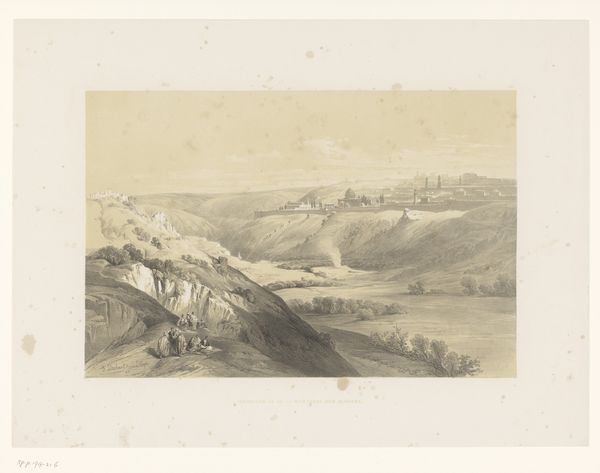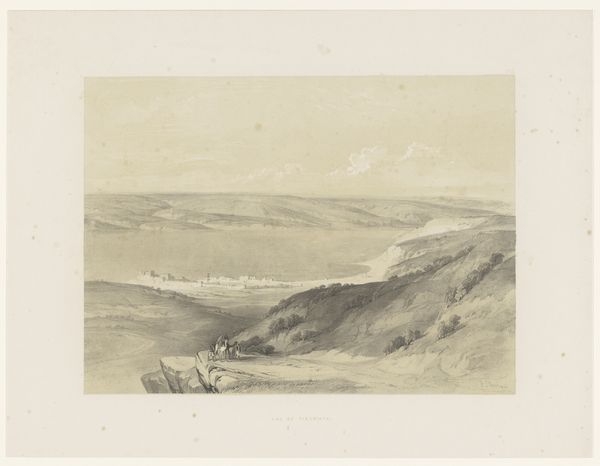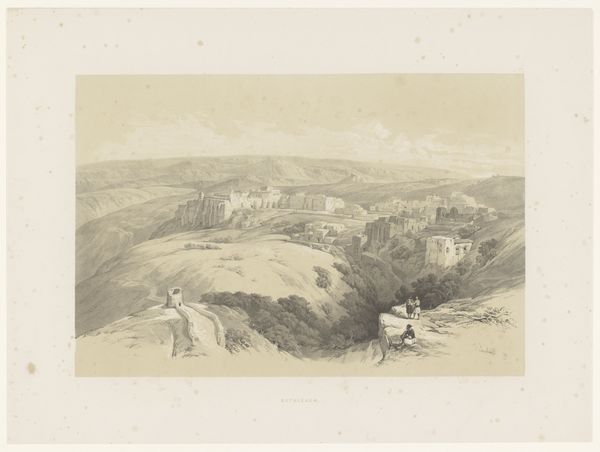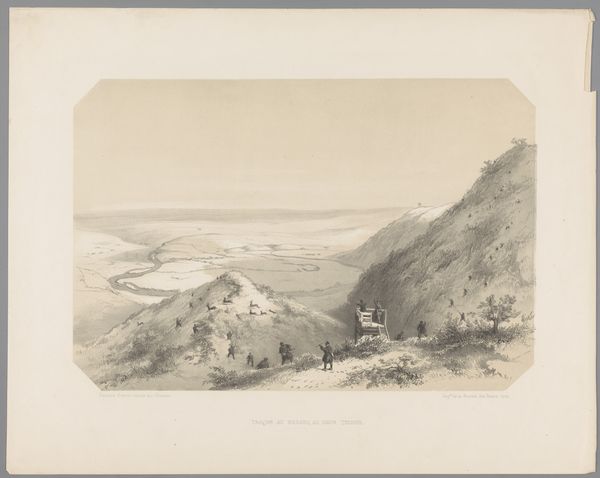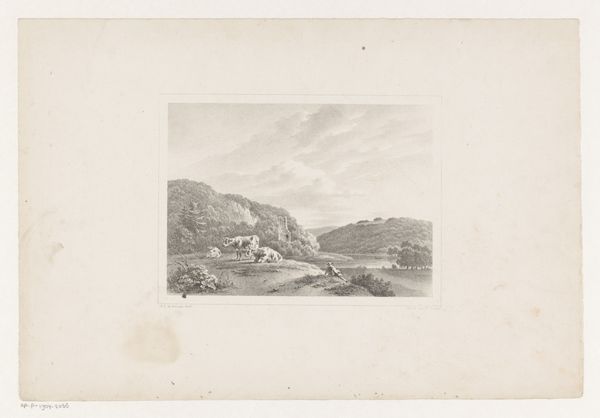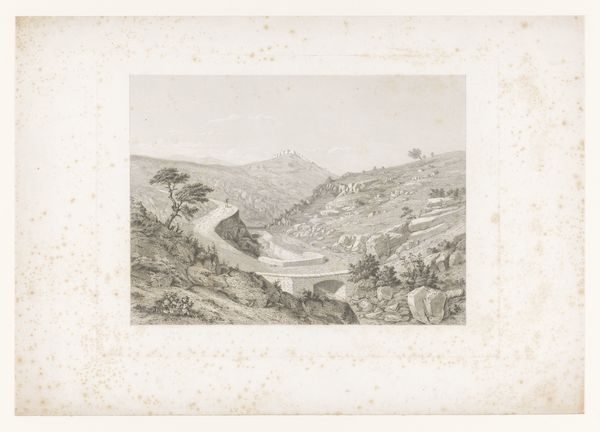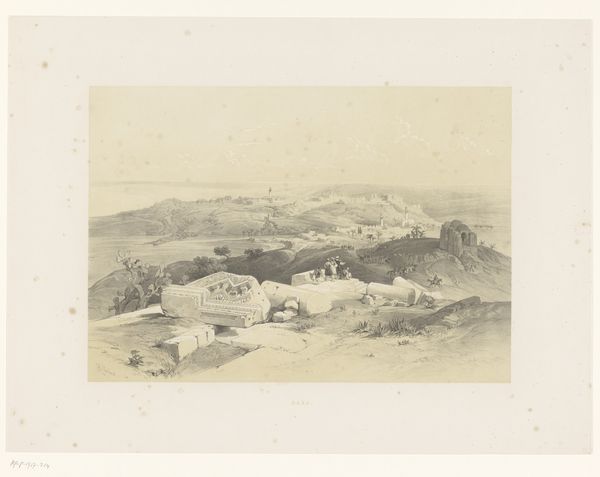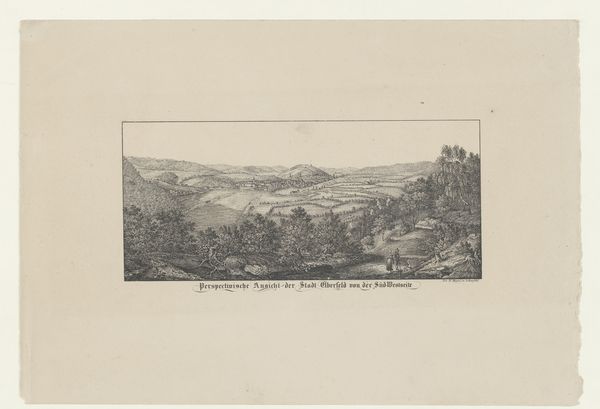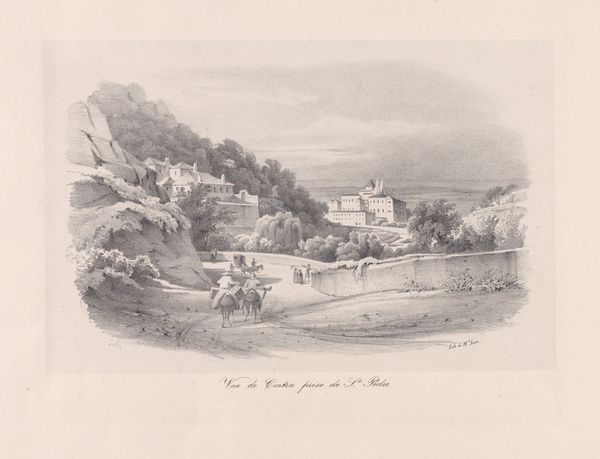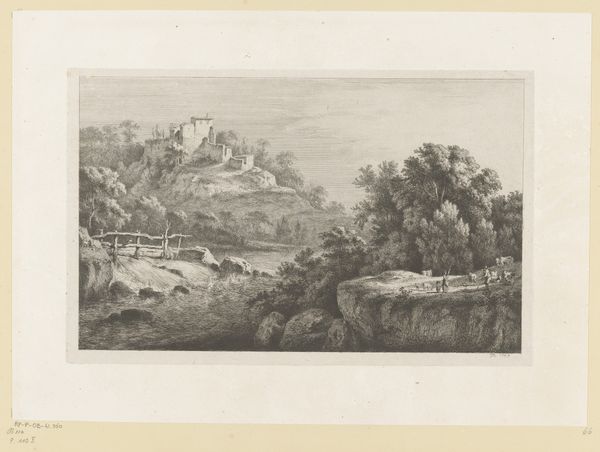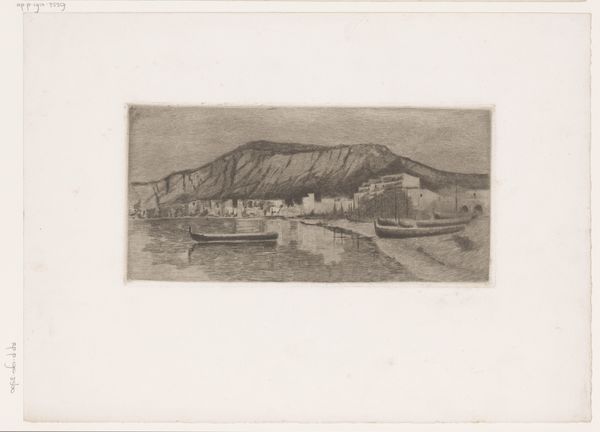
Dimensions: height 394 mm, width 530 mm
Copyright: Rijks Museum: Open Domain
Editor: Here we have François Stroobant’s "Landschap met gezicht op Nazareth," a pencil drawing and print from 1852. It's incredibly subtle; at first glance, almost dreamlike, faded with age. I’m immediately drawn to the way he’s captured the light – or the memory of light. What's your impression when you look at this, knowing its subject matter? Curator: Ah, yes. It breathes a quietude, doesn’t it? Knowing it's Nazareth, there’s a certain resonance… or perhaps it’s projection? The artist is not giving us grand pronouncements, but rather a tender gaze at a place laden with significance. Do you see how he uses the soft gradations of pencil to almost…spiritualize the landscape? It's less a portrait of a place, more an echo of it. Almost like the city is a mirage. What do you make of the lone figures making their way across the foreground? Editor: They add a human scale, a journey. Otherwise, it might feel totally deserted. It makes me wonder what their lives are like, walking toward that distant city. What's interesting to me is that, even though it's a cityscape, the human narrative is minimal; the landscape really takes centre stage. It is interesting, what you say about spiritualization, especially when we know about its history... Curator: Precisely! Stroobant isn’t just showing us a town, but also hinting at its story, its weight. I wonder if he intended a bit of melancholic beauty to show through the drawing. It's romantic, wouldn't you say? Capturing a certain emotional intensity. Editor: Definitely romantic! And maybe melancholy's not a bad thing to take away, right? There's a story here beyond what's immediately visible, and it lingers in the mind. Curator: It's a quiet power, indeed. I’ll carry that with me, thinking about what stories art carries and evokes.
Comments
No comments
Be the first to comment and join the conversation on the ultimate creative platform.
